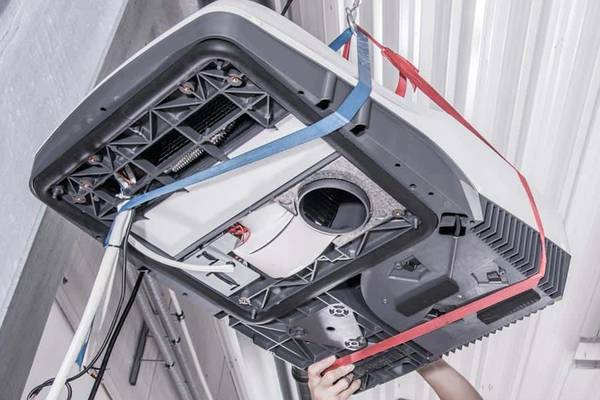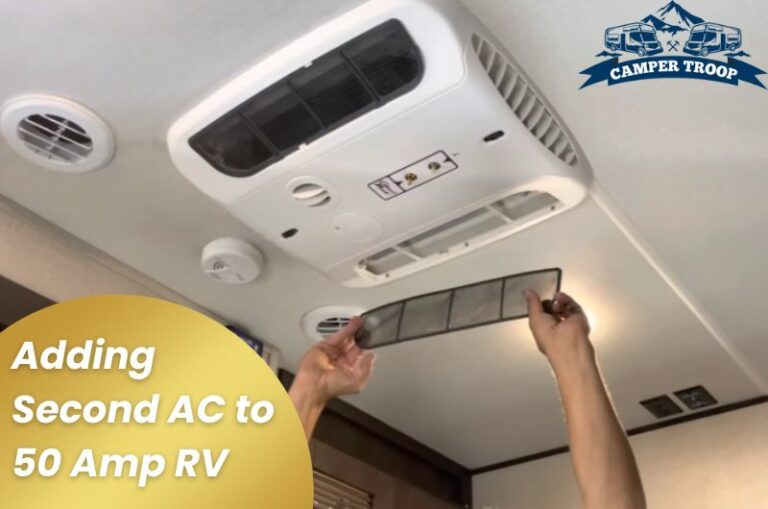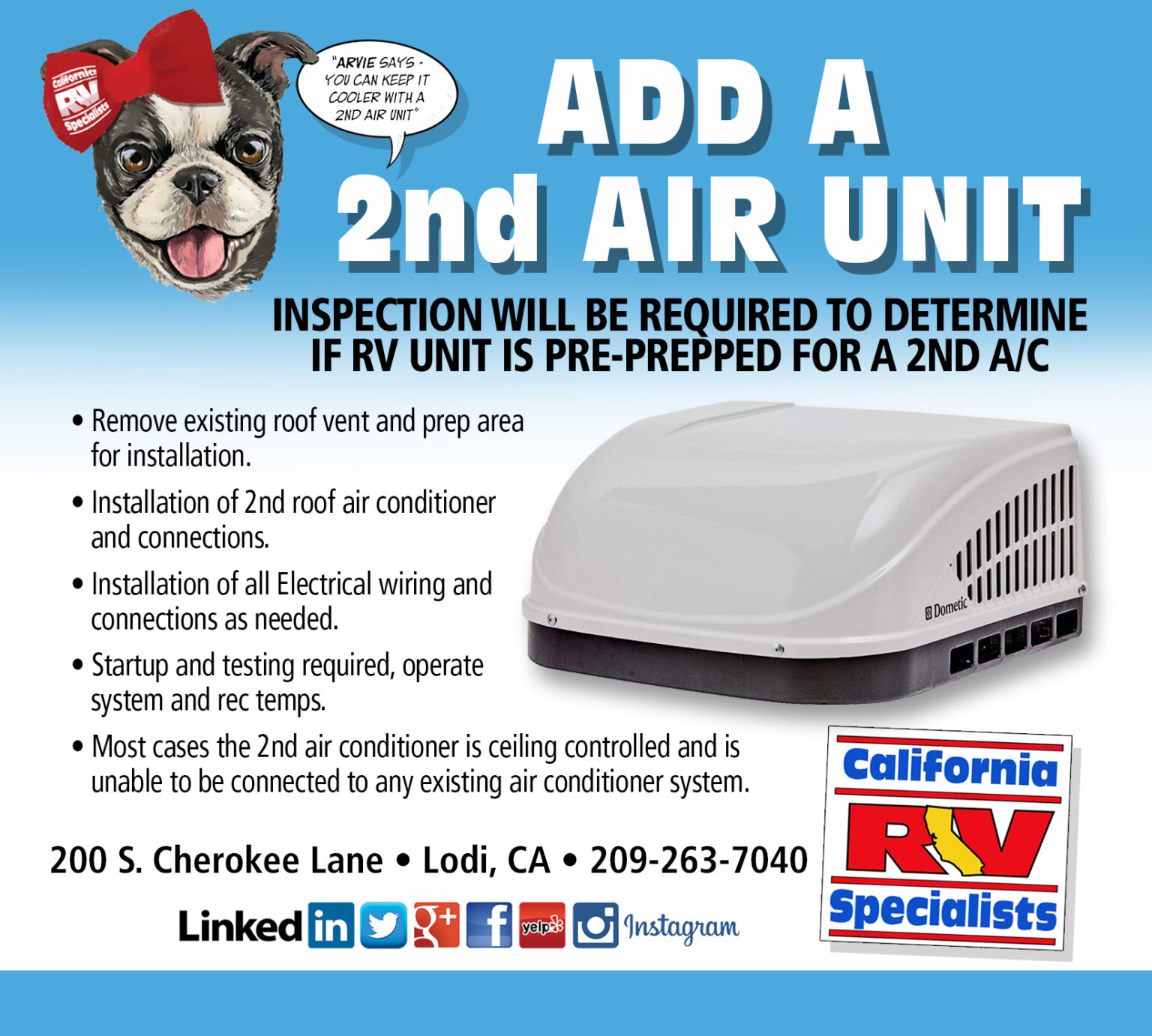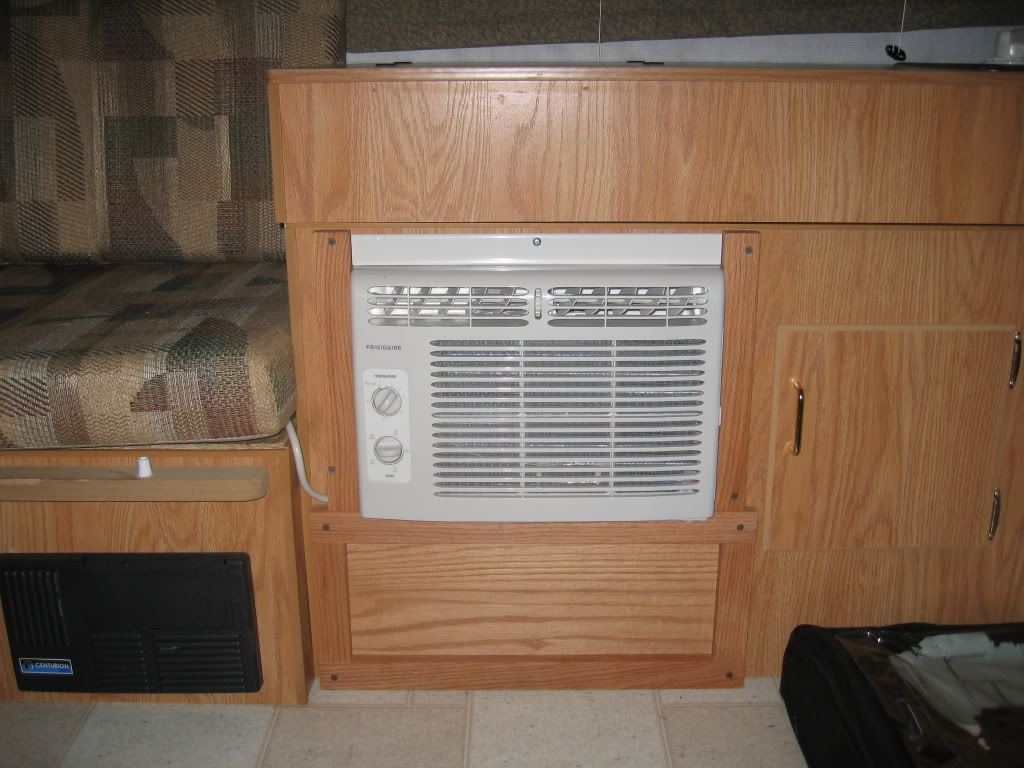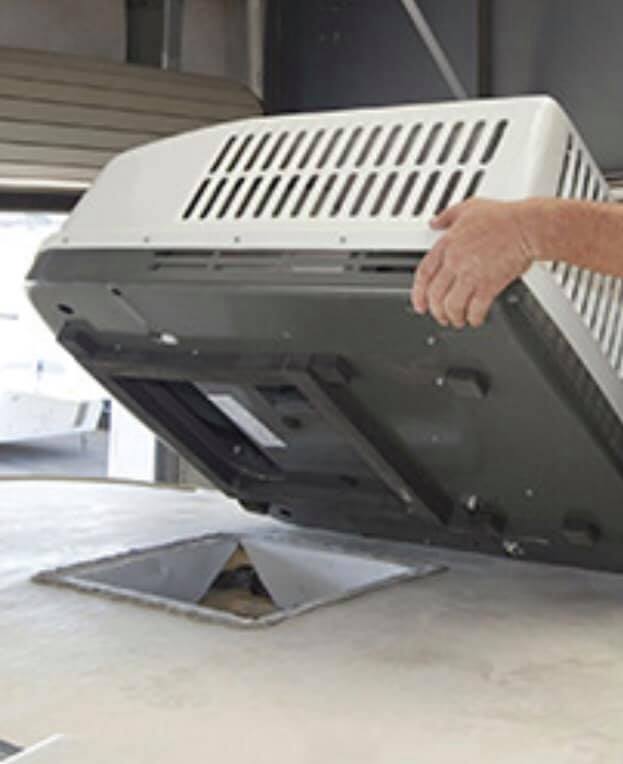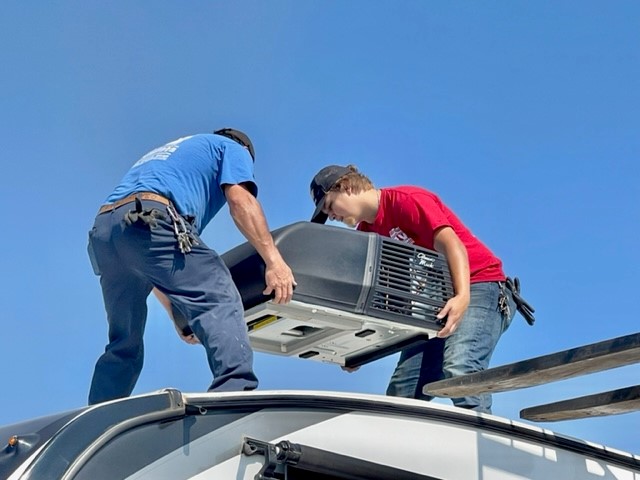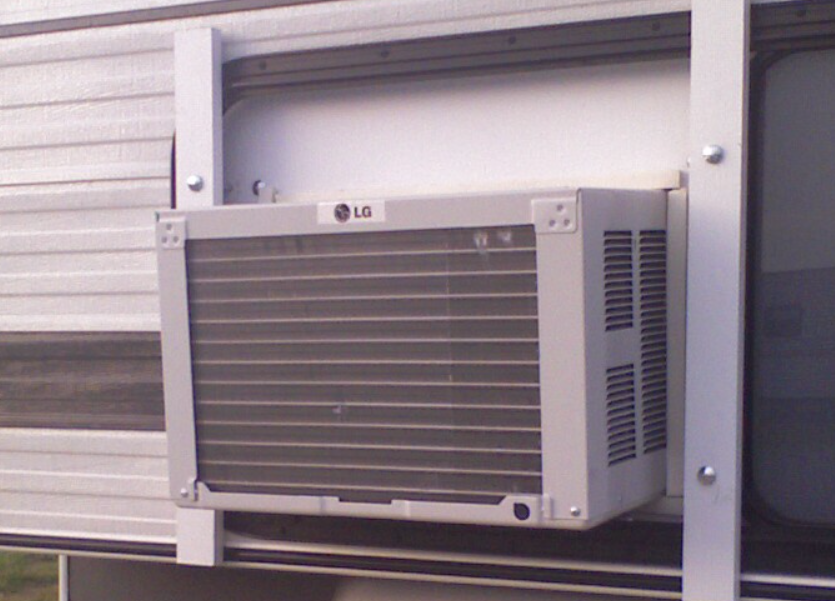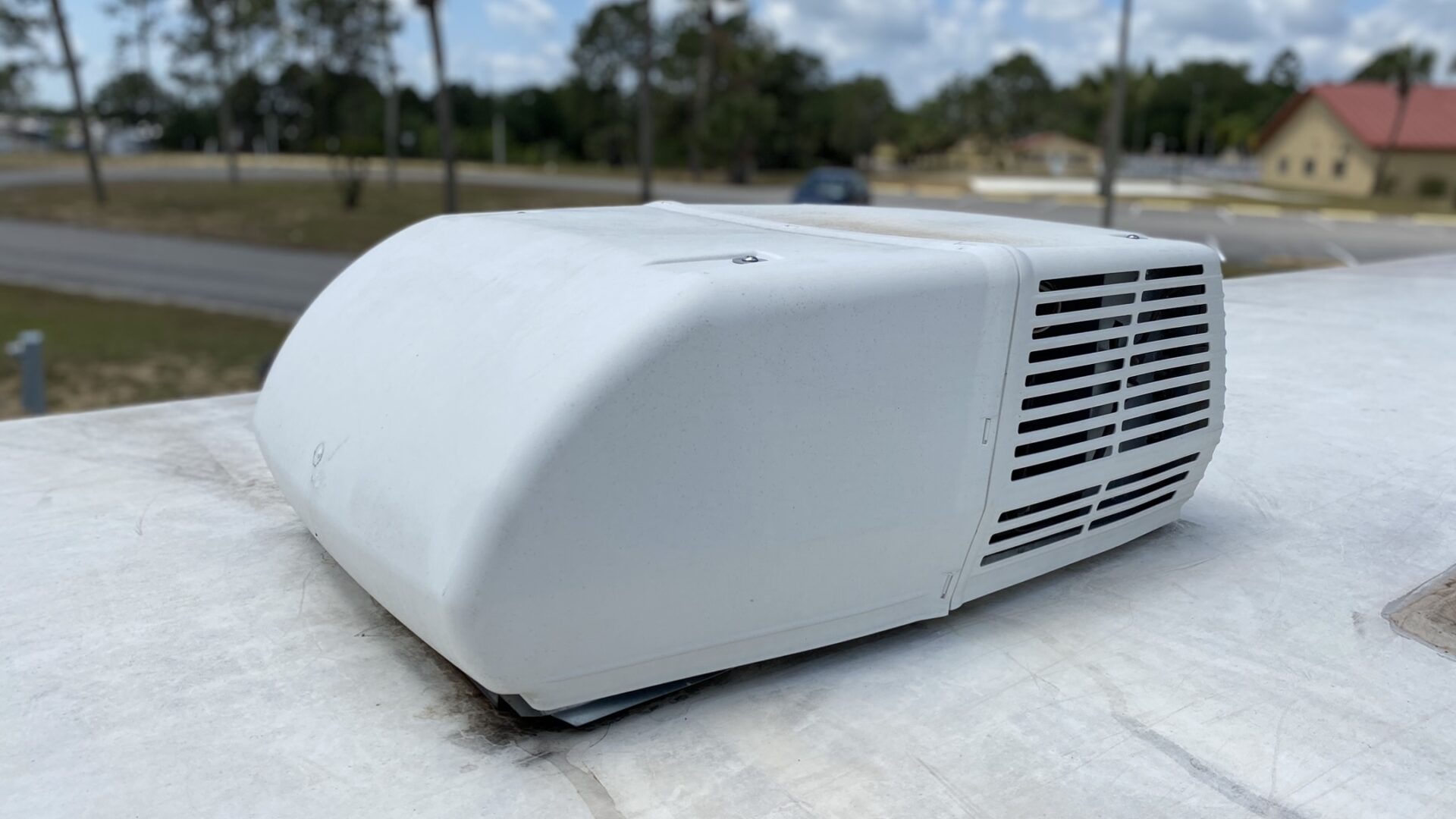Adding A Second Ac Unit To Rv

The oppressive summer heat is no longer confined to stationary homes. A growing number of recreational vehicle (RV) owners are finding a single air conditioning unit inadequate to cool their mobile living spaces, leading to a surge in demand for second AC installations. This trend reflects a broader shift towards longer RV trips and a desire for greater comfort in increasingly extreme weather conditions.
This article delves into the rising popularity of adding a second AC unit to RVs, exploring the reasons behind this trend, the technical considerations involved, the associated costs, and the potential impact on RV energy consumption. We'll examine the perspectives of RV owners, industry experts, and manufacturers to provide a comprehensive overview of this burgeoning market segment.
The Driving Force Behind the Dual-AC Trend
Several factors are fueling the demand for dual AC units in RVs. Climate change is a significant contributor, with record-breaking temperatures impacting travel destinations across the country.
According to the National Oceanic and Atmospheric Administration (NOAA), recent summers have been among the hottest on record, pushing the limits of existing RV cooling systems. These extreme temperatures make single AC units struggle to maintain comfortable interior temperatures, especially in larger RV models.
Another key factor is the increasing size and sophistication of RVs. Modern RVs often feature multiple slide-outs, expansive windows, and increased insulation, all of which can contribute to heat gain.
Larger RVs simply require more cooling capacity, and a single unit is often insufficient to handle the load. Furthermore, many RV owners are opting for longer and more frequent trips, spending extended periods in their vehicles during peak summer months.
This necessitates a more robust cooling system to ensure a comfortable and enjoyable travel experience.
Technical Considerations and Installation
Adding a second AC unit to an RV is not a simple plug-and-play operation. It requires careful planning and consideration of several technical factors. The first and foremost consideration is the RV's electrical system.
Most RVs are equipped with either 30-amp or 50-amp electrical service. Adding a second AC unit can easily overload a 30-amp system, requiring an upgrade to 50-amp service. According to RV service technicians at Camping World, upgrading the electrical service can be a significant expense, potentially adding hundreds of dollars to the overall installation cost.
Another crucial aspect is the RV's roof structure. The roof must be strong enough to support the weight of the additional AC unit, which can range from 75 to 100 pounds. Professional installation is highly recommended to ensure proper sealing and prevent leaks.
AC installation typically involves cutting a new opening in the roof, wiring the unit to the electrical system, and sealing the unit to prevent water damage. This process requires specialized tools and expertise.
There are, however, portable air conditioning units that do not require roof installation. These units offer a flexible and potentially cheaper alternative; however, they tend to be less efficient.
Cost Analysis: Is a Second AC Unit Worth It?
The cost of adding a second AC unit to an RV can vary widely depending on several factors. The type of AC unit, the RV's electrical system, and the labor costs for installation all play a role.
According to data from RV dealerships and service centers, a new rooftop AC unit can range from $800 to $1500. Installation costs can add another $500 to $1000, depending on the complexity of the job.
If an electrical upgrade is required, the total cost can easily exceed $2000. RV owners must also consider the increased energy consumption associated with running two AC units. This can lead to higher campground fees and increased generator usage.
Despite the costs, many RV owners believe that the added comfort and cooling capacity are well worth the investment. John Smith, an avid RVer from Texas, stated, "Having that second AC unit made all the difference during our summer trip to Arizona. It allowed us to stay cool and comfortable, even in the extreme heat."
Impact on Energy Consumption and Sustainability
The increased energy consumption associated with dual AC units raises concerns about sustainability. RVs already have a reputation for being energy-intensive vehicles.
Adding a second AC unit exacerbates this issue. RV owners can mitigate the environmental impact by using energy-efficient AC units, investing in solar panels, and practicing energy conservation measures.
Many RV manufacturers are now offering models with pre-wired electrical systems for second AC units, making it easier for owners to upgrade. Some are also incorporating more energy-efficient appliances and insulation materials to reduce overall energy consumption.
Efforts to improve RV energy efficiency are essential for ensuring the long-term sustainability of the RV lifestyle. This requires a collaborative approach involving manufacturers, owners, and policymakers.
The Future of RV Cooling
The trend towards dual AC units in RVs is likely to continue as climate change intensifies and RVs become larger and more luxurious. Manufacturers are responding to this demand by developing more efficient and powerful AC units.
Technological advancements in RV cooling are also on the horizon. Solar-powered AC units, smart thermostats, and improved insulation materials could further enhance the cooling capabilities of RVs while minimizing energy consumption.
As the RV industry evolves, balancing comfort and sustainability will be crucial. Innovations in cooling technology will play a key role in shaping the future of the RV experience, ensuring that travelers can enjoy the open road without compromising the environment.
